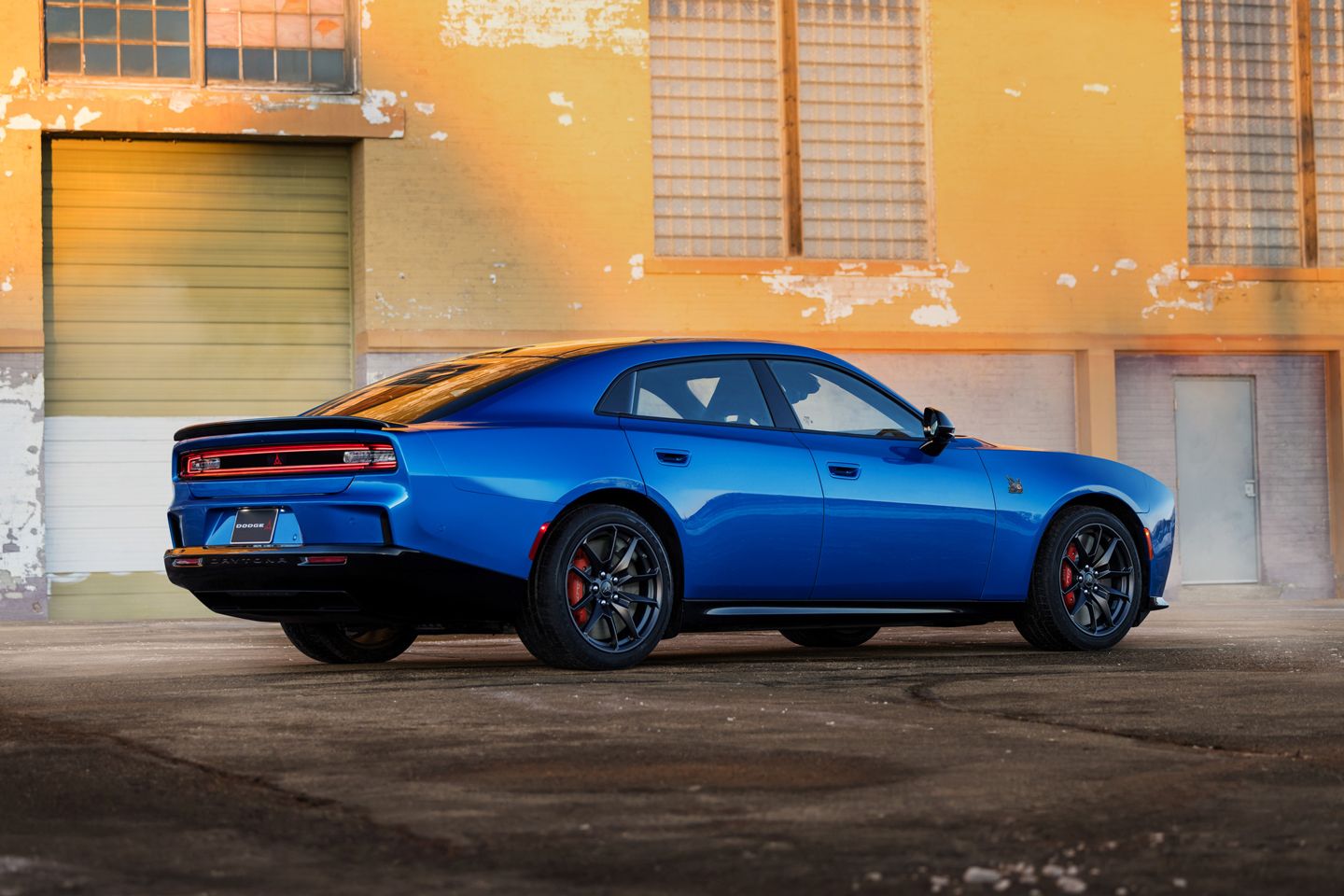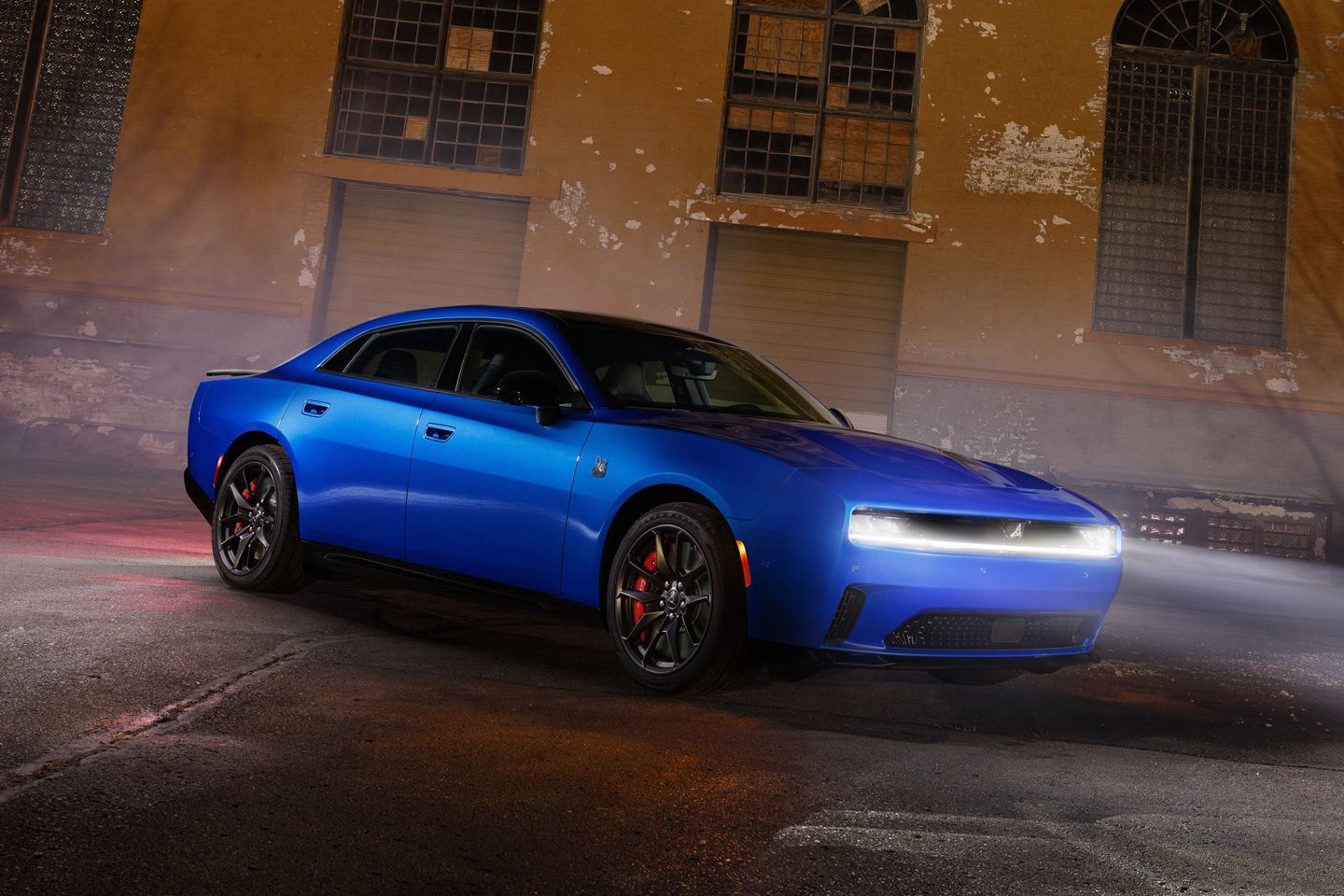
It’s been more than a year since Dodge revealed its all-electric Charger. Its maker decreed it ‘the world’s first and only electric muscle car’ at the time – a declaration that remains true now (assuming you’re willing to dismiss the idea that any other absurdly powerful EV has no credible claim to the narrow concept of ‘muscle’). And now, thanks to the all-new 2026 Dodge Charger Daytona Sedan, the brand has another one to hand: the world’s only four-door muscle car.
In many ways, of course, this is even more dubious. Fast four doors abound in the battery-powered world; Mercedes-AMG is on the cusp of launching one with more than 1,000hp; the Porsche Taycan Turbo GT we drove this week already produces that much (occasionally). And that’s before we get to whatever the electrified replacement for the BMW M3 looks and sounds like. But we digress. If the monopoly on muscle cars means being American, then the saloon version of the Charger – a model underpinned by seven previous generations – is richly deserving of the description.

Or as much as any car can be without the presence of a large petrol engine. Like the two-door Charger before it, the Daytona sedan makes up for that with large numbers. Even more so in fact, because it seems all versions will now feature the previously optional Scat Pack, which unlocks 670hp and 627lb ft of torque from the factory. And thanks to standard all-wheel drive (courtesy of dual electric motors) that means 0-60mph in 3.3 seconds – or, as Dodge prefers to measure it, ‘Hellcat Redeye levels of performance’.
Much else is the same, too. You still get the ‘fratzonic chambered exhaust’ (patent pending), a full suite of drive modes, 20-inch wheels with staggered tyre sizes (325-section at the rear), a mechanical limited-slip rear diff, and up to 241 miles of range courtesy of a 100.5kWh battery. And you absolutely get the same look because Dodge has gone out of its way to migrate the Charger’s exterior styling to the sedan. The models share a common roofline and liftgate, and there is no difference whatsoever in the design of the front or rear – just more doors on the flanks.
“The beauty is in the simplicity,” said Matt McAlear, Dodge CEO. “It’s a real testament to the Dodge design and engineering teams that apart from two additional doors, the Dodge Charger Daytona sedan embodies the same look and feel as the coupe, with the same widebody exterior, driver-centric interior, muscle car performance, and standard all-wheel-drive capability, combined with four-door practicality.”

While it is clearly easier to access, Dodge reiterates – much as it did for the two-door – that the Charger offers the best in class cargo and passenger space (though what exactly it includes in that ‘class’ isn’t clear). At any rate, it’s the least you would expect from a model that apparently boasts ‘the widest body of any car in the industry’. In fact, its maker suggests that one of the objectives of fitting rear doors was to help accentuate the ‘powerful presence’ of the current Charger – an attribute it likely needs help with given the conspicuous absence of gargling thunder.
Happily, it will not remain that way for long. “The 2026 Charger lineup is all about giving our customers the power to choose the muscle car that best fits their lifestyle, with even more choices to come later this year with gas-powered SIXPACK Charger models,” McAlear confirmed. This version, powered by a 550hp derivative of the new twin-turbocharged 3.0-litre Hurricane straight-six, was promised for Q1 of 2025 when Dodge originally launched the EV – evidently, that target date has slipped to the second half of the year. You’d imagine there are plenty of buyers who consider a muscle car fuelled by petrol well worth the wait.

